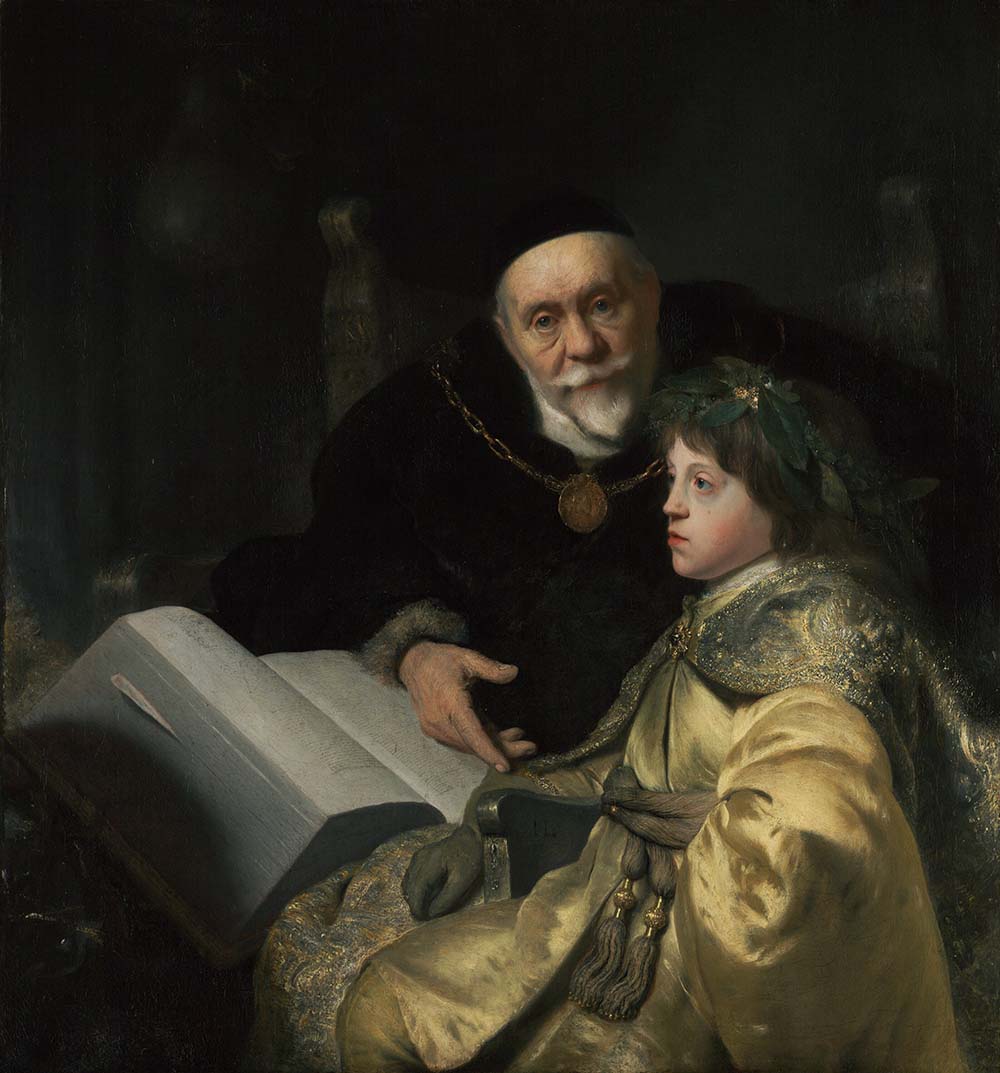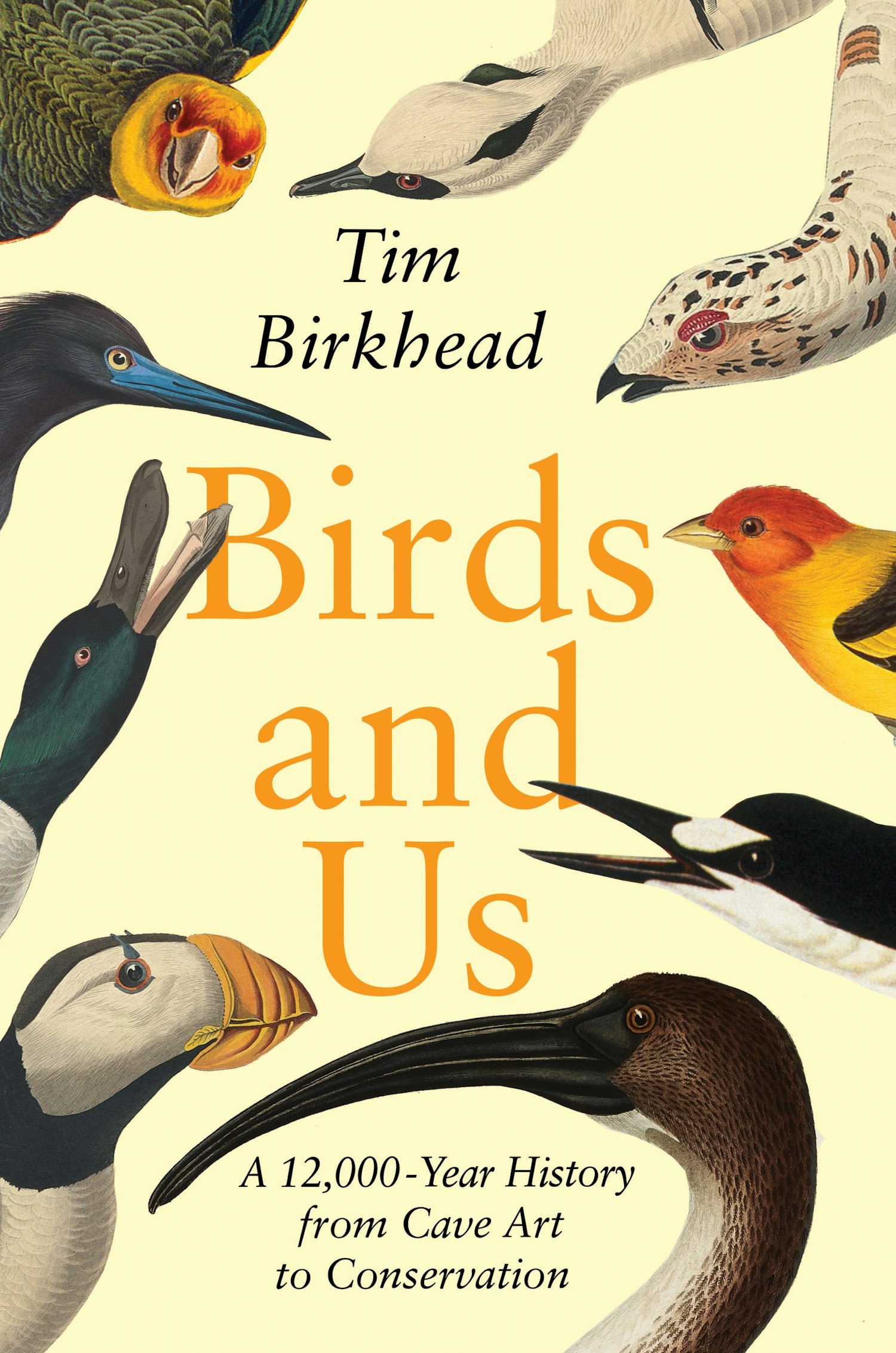
Terracotta skyphos with Athena and goose, Greek, c. 460 bc. The Metropolitan Museum of Art, Rogers Fund, 1967.
Aristotle liked birds. He liked all forms of life, but he had a special affection for birds, probably because they are so similar to us in many ways. They walk upright on two legs, they have excellent eyesight and hearing, and their ability to sing—and in some cases to speak—sets them apart from most other organisms.
In the fourth century before the birth of Christ, Aristotle, in an ambitious intellectual feat, set out to document everything that was known about the natural world, including birds. Educated in Plato’s Academy, his main goal was to understand why things were the way they were. He was essentially the first scientist: making observations (or hearing of those made by others) and trying to make sense of them. What he learned he also taught, and his numerous books that still exist were once his lecture notes. Aristotle’s abilities as a teacher are revealed in his precise and pragmatic writings, and his knowledge was such that he was described as being a one-man university. His interests spanned philosophy, ethics, politics, logic, and rhetoric, as well as human biology and natural history.
Aristotle’s pupils included Alexander of Macedon—Alexander the Great. Of all Aristotle’s bird-related information, there is one piece that stands above the rest. It relates closely to my own research on sexual reproduction. The chicken, or Domestic Fowl, as I prefer to call it, is the bird whose natural behavior is most easily and clearly observed. Other species can be watched, but they usually offer little more than a glimpse.
Farmyard fowl are tame and uninhibited, and behave much like their wild ancestor, the Red Junglefowl. The social organization of both the junglefowl and farmyard fowl consists of a dominant cockerel, a few subordinate males, and a harem of females with whom the dominant male is hell-bent on mating. Despite providing a convenient model for observing bird behavior, the fowl is somewhat atypical in that it is polygynous, meaning that one male (the dominant cockerel) mates with the several females that comprise his harem. Most other birds, as Aristotle well knew, are socially monogamous and breed together as pairs, as most humans do.
The Domestic Fowl’s domestic life—at least before large-scale commercial farming—is ingrained in our minds through fairy stories and folklore. One writer aptly captured its essence: “The cock is a jealous tyrant and the hen a prostitute.” Aristotle was fascinated by “generation,” a term that encompasses both copulation and embryo development—essentially all aspects of reproduction. Not only is generation the most fundamental aspect of animal life, in Aristotle’s time and for centuries afterward, it was also the most mysterious. It is hardly surprising, then, that Aristotle thought about it a great deal and devoted an entire book to the topic. Given the uncertainty surrounding reproductive events, his account turned out to be a mix of fact, fiction, and speculation.
Domestic Fowl, partridges, and small birds, he says, copulate a lot, but raptors do not copulate very much at all. His explanation is probably not one that would occur to us today, even though it anticipates some modern ideas. His suggestion is that a trade-off exists between the size of certain parts of the body and copulation frequency. The thinness or weakness of certain birds’ legs, he tells us, makes them prone to copulation, adding that “this applies also to human beings.” As he explains, this is because the nourishment that was intended for the legs is diverted into semen. Because of their short, thick legs, raptors—he says—do not copulate very frequently. He could hardly have been more wrong.
I became fascinated by how often birds copulate after discovering that—contrary to popular belief—the females of many species, despite being paired with one male and hence socially monogamous—were actually sexually promiscuous. The consequence of such promiscuity is that the sperm from different males compete inside the female’s oviduct to fertilize her eggs. My colleagues and I referred to this entire field of research as sperm competition, and to copulations outside the pair bond as extra-pair copulations. The $64,000 question was how many extra-pair copulations would it take to result in one or more extra-pair offspring?
The answer, we assumed, would depend—at least in part—on how many pair copulations the extra-pair male had to compete with. Frustratingly, no one knew, for in the 1970s when my research started, there was almost no information available on how often birds copulated—not even for farmyard fowl. How would one find out? The answer was to discover a bird species that could be monitored continuously throughout the copulation phase of its breeding cycle. The Domestic Fowl was the obvious choice, although, being polygynous, it wasn’t the best starting point for trying to understand monogamy and its deviations.
I remembered that several decades earlier, in an effort to guard the nest of a pair of extremely rare Western Ospreys breeding at Loch Garten in Scotland, volunteers had undertaken around-the-clock observations, noting—among other things—the number of times the ospreys copulated. I duly obtained access to this gold mine of information and spent several weeks plowing through years of notebooks to extract the necessary details. The results were extraordinary: 150 copulations for each clutch of two or three eggs.
Although not all copulations ended in the necessary “cloacal kiss” that signaled successful insemination, there was still an average of fifty-nine inseminations per clutch. A one-off mating with another male would not have much chance of fertilization, we guessed. Other raptors, it turned out, also had very high mating frequencies—and this is possibly the way that the male partner ensures that he is the father of the offspring he subsequently helps to rear. How could Aristotle have got it so wrong? Easily. Neither he nor any of his contemporaries sat and watched undisturbed raptors at the nest in the same way as the Loch Garten volunteers had done.
On the other hand, Aristotle was right about Domestic Fowl: they certainly do copulate a lot. I was subsequently able to study the mating behavior of free-living Domestic Fowl with Tom Pizzari, a talented PhD student, which revealed a level of copulatory sophistication that would have startled Aristotle as much as it startled us. We (Tom, mainly) showed that cockerels know and recognize each hen in their harem; remember when they have copulated with them; and, most remarkably of all, adjust the number of sperm they transfer to each female depending on the time since their last mating and whether that female had copulated with another male.
Aristotle may have been muddled about some aspects of reproduction, but here is the standout example of his extraordinary insight. It concerns sperm competition in Domestic Fowl and a phenomenon known to present-day biologists as “last male sperm precedence.”
When one cockerel, Aristotle informs us, is removed from a flock and replaced by another, it is the second male that fathers most of the subsequent offspring. Not too surprising, you might think, but the significance of this—and it seems that Aristotle understood it—is that even without copulating with a second male, the hens would have continued to produce fertile eggs and chicks. This occurs because female fowl store viable sperm for up to three weeks. When a second male replaces the first and starts to inseminate the hens, his sperm take precedence—hence the term. Aristotle did not know that the female fowl’s protracted period of fertility was the result of stored sperm, but he seems to have recognized that replacing one male with another produced an unexpected result—why else would he have commented on this?
A further remarkable thing is that for Aristotle (or, more likely, his informant) to have known about this, the two cockerels must have been of different genotypes—distinct breeds—such that they sired offspring with different colored plumage. Otherwise, how could anyone have known that the second male fathered more offspring?
Last male sperm precedence, we now know, occurs in many different animals, from fruit flies to finches, in which females mate with more than one male. And, of course, this is why it is worthwhile for a male to inseminate an already-mated female—there’s always a chance of fertilization. For later biologists, including myself, figuring out the process by which a second male’s sperm takes precedence was a fascinating challenge.
Like Aristotle, I used Domestic Fowl to investigate this, but I used molecular methods—DNA fingerprinting—to assign paternity. Basically, in Domestic Fowl—and probably in most birds—the second male’s sperm numerically swamps those of the first in the female’s sperm stores. Simple? Yes, as are many biological phenomena when you get down to it, but demonstrating this convincingly was far from simple.
Why get excited by anything that in retrospect seems so obvious? The answer is that in other animals last male sperm precedence occurs for other reasons. In dragonflies, for example, second males physically drag the first male’s sperm out of the female before introducing their own. My research on sperm competition in birds was stimulated by discovering widespread female promiscuity and wondering about the competition between the sperm of their different partners. This became a major area of research, and it would have been nice if I could tell you that it was all started by Aristotle’s observations on chickens. Sadly, I cannot.
The relevance of his second male sperm precedence observation lay unrecognized for millennia and was only “discovered” by poultry biologists in the 1960s. This was a couple of decades before the subject of “sperm competition” became popular among evolutionary biologists. Even so, I love this link—thank you, Aristotle—between the past and the present.
Aristotle is often said to have been the first to describe the development of the chick. He also thought, erroneously, that birds’ eggs were laid with a soft shell—to ease their passage—that hardened on exposure to the air. A touching idea, but not true. Aristotle amassed information both from his own observations and from those who lived close to nature such as fishermen, beekeepers, and bird catchers.

He then sought patterns within the mass of accumulated “facts” and from these generated general explanations for what was observed. He was sufficiently objective and open-minded to realize he might often be wrong: “But the facts are incomplete, and if at any future time they are better established then more credence should be given to the evidence.”
His approach was one that characterized science for much of its history. All areas of study go through an observation phase—equivalent to Aristotle’s amassing of information. Then follows a period of trying to make sense of those observations, attempting to find some generalities or patterns that provide general explanations. Aristotle’s followers in the next 1,500 years, however, saw his explanations as final. It was as if he had opened the door to understanding, then pulled it firmly shut behind him, because nothing more was required. But of course nothing could be further from the truth. The difference between Aristotle’s “science” and what started in the mid-1600s was that Aristotle’s “explanations” were really just ideas—ideas that required the rigorous testing and verification introduced by the Scientific Revolution.
None of this is to undermine Aristotle’s remarkable achievements. His approach, which included taking information from others, meant that he was bound to make some mistakes. Some later writers, including the Nobel Laureate biologist Peter Medawar and his wife, Jean, considered Aristotle to be a dud. They referred to his works as “a strange and generally speaking rather tiresome farrago of hearsay, imperfect observation, and wishful thinking.” But that’s an overreaction, and places far too much emphasis on Aristotle’s errors. Darwin was much more positive: “Linnaeus and Cuvier have been my gods…but they were mere schoolboys to old Aristotle.”
Excerpted from Birds and Us: A 12,000-Year History from Cave Art to Conservation by Tim Birkhead. Copyright © 2022 by Princeton University Press. Reprinted by permission of Princeton University Press.
